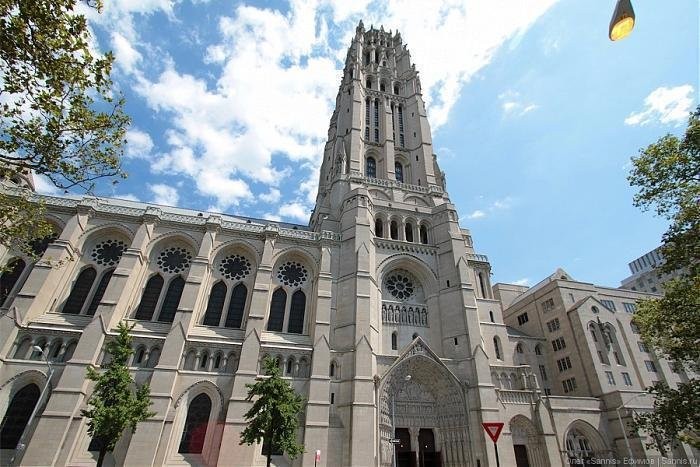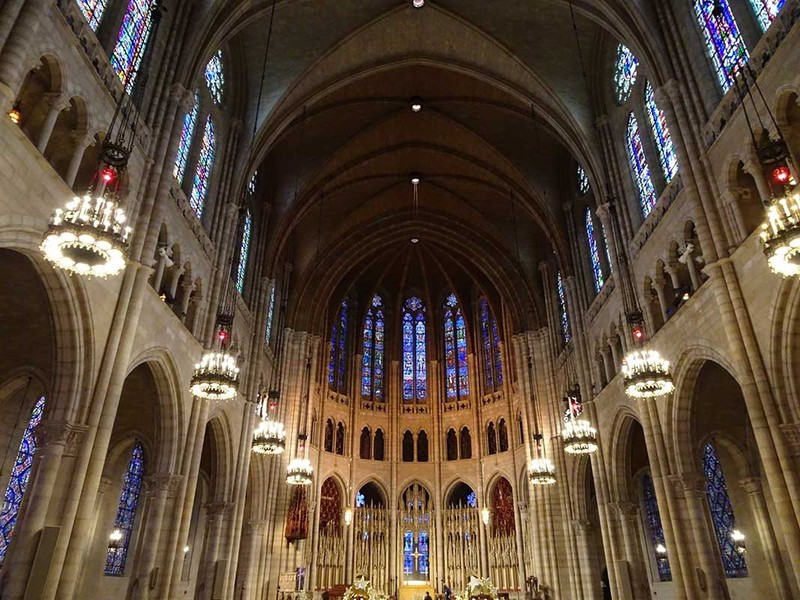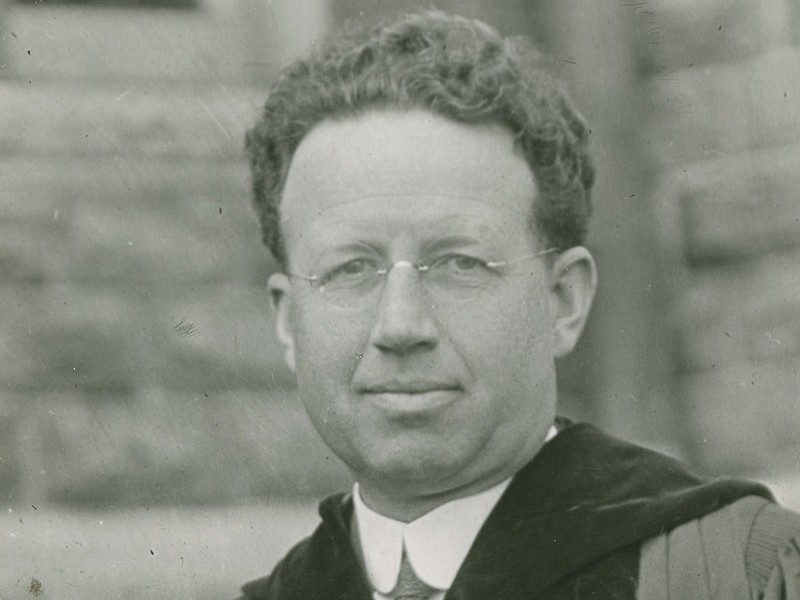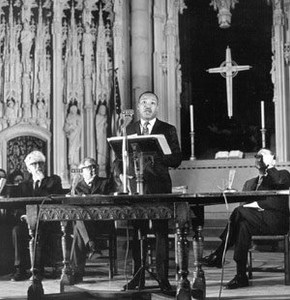Riverside Church
Introduction
Text-to-speech Audio
Completed in 1930, New York’s Riverside Church was modeled on Chartres Cathedral in France. The interdenominational church was the work of industrialist and philanthropist John D. Rockfeller and the minister Harry Emerson Fosdick, with both men envisioning a church open to any person of the Christian faith. Located on a prominent spot overlooking the Hudson River, the church is the tallest in the United States and one of the tallest in the world. The church is known for its activism and has a congregation representing more than forty ethnic groups. The church is listed on the National Register of Historic Places.
Images
Riverside Church

The interior of the church

Harry Emerson Fosdick

Martin Luther King gives his "Riverside Speech" in 1967

Backstory and Context
Text-to-speech Audio
Arguably the best model of Protestant liberalism in the United States, Riverside Church was conceived in dawning years of the twentieth century. It was a time of debate among Christians, as many of the faithful questioned the competing ideas of fundamentalism and modernism. Christians who were more inclined to accept modernist ideas believed that the faith needed to adapt to the modern world and forge a more activist role in society.
The congregation of Park Avenue Baptist Church, of which oil magnate John D. Rockefeller was a member, had such a vision for the church. With financing from the industrialist and the support of liberal pastor Harry Emerson Fosdick, a new, cathedral-like church was designed. The inspiration for the building was Chartres Cathedral in France. Rockfeller purchased land in Morningside Heights, on a prominent location overlooking the Hudson River, where the Upper West Side meets Harlem, in the 1920s, and the building was complete in 1930.
The church, which is the tallest in the United States and one of the tallest in the world, is Gothic in style and is characterized by its massive single bell tower, which is roughly the equivalent of a 22-story building in height. Inside the tower is a massive carillon that Rockefeller dedicated in memory of his mother, Laura Spelman Rockefeller. The carillon includes a 20-ton bourdon, which is the largest tuned bell ever cast.
From its inception, Riverside was one of the country's most progressive congregations. Its pastors were among the country's most outspoken proponents of social justice. Over the years, Riverside has been a center of activism and supports a number of ministries, including an immigrants' rights ministry and an HIV-AIDS ministry. In addition to Fosdick, a number of other progressive ministers have occupied the pulpit at Riverside, including William Sloane Coffin, who was a freedom rider during the civil rights movement and an outspoken critic of the war in Vietnam.
One of the church's most significant moments came in 1967, when Dr. Martin Luther King, Jr., spoke at Riverside. The speech condemned the Vietnam War, which King saw as immoral because of the harm done to Vietnamese peasants and also because it was a war, he believed, that was disproportionately fought by the poor and minorities. The "Riverside Speech," as it came to be known, is one of King's most famous, but one that led to widespread criticism of him among Americans who felt it was unpatriotic.
In addition to Dr. King, Riverside has hosted many other notable speakers, including Cesar Chavez, Desmond Tutu, Bill Clinton, Nelson Mandela, Reinhold Niebuhr, and Deitrich Bonhoffer. Riverside Church is open for tours and is listed on the National Register of Historic Places.
The congregation of Park Avenue Baptist Church, of which oil magnate John D. Rockefeller was a member, had such a vision for the church. With financing from the industrialist and the support of liberal pastor Harry Emerson Fosdick, a new, cathedral-like church was designed. The inspiration for the building was Chartres Cathedral in France. Rockfeller purchased land in Morningside Heights, on a prominent location overlooking the Hudson River, where the Upper West Side meets Harlem, in the 1920s, and the building was complete in 1930.
The church, which is the tallest in the United States and one of the tallest in the world, is Gothic in style and is characterized by its massive single bell tower, which is roughly the equivalent of a 22-story building in height. Inside the tower is a massive carillon that Rockefeller dedicated in memory of his mother, Laura Spelman Rockefeller. The carillon includes a 20-ton bourdon, which is the largest tuned bell ever cast.
From its inception, Riverside was one of the country's most progressive congregations. Its pastors were among the country's most outspoken proponents of social justice. Over the years, Riverside has been a center of activism and supports a number of ministries, including an immigrants' rights ministry and an HIV-AIDS ministry. In addition to Fosdick, a number of other progressive ministers have occupied the pulpit at Riverside, including William Sloane Coffin, who was a freedom rider during the civil rights movement and an outspoken critic of the war in Vietnam.
One of the church's most significant moments came in 1967, when Dr. Martin Luther King, Jr., spoke at Riverside. The speech condemned the Vietnam War, which King saw as immoral because of the harm done to Vietnamese peasants and also because it was a war, he believed, that was disproportionately fought by the poor and minorities. The "Riverside Speech," as it came to be known, is one of King's most famous, but one that led to widespread criticism of him among Americans who felt it was unpatriotic.
In addition to Dr. King, Riverside has hosted many other notable speakers, including Cesar Chavez, Desmond Tutu, Bill Clinton, Nelson Mandela, Reinhold Niebuhr, and Deitrich Bonhoffer. Riverside Church is open for tours and is listed on the National Register of Historic Places.
Sources
Riverside Church. New York Architecture. . Accessed April 26, 2019. http://www.nyc-architecture.com/HAR/HAR009.htm.
Beyond Vietnam. King Encyclopedia. . Accessed April 26, 2019. https://kinginstitute.stanford.edu/encyclopedia/beyond-vietnam.
Beyond Vietnam. King Encyclopedia. . Accessed April 26, 2019. https://kinginstitute.stanford.edu/encyclopedia/beyond-vietnam.
